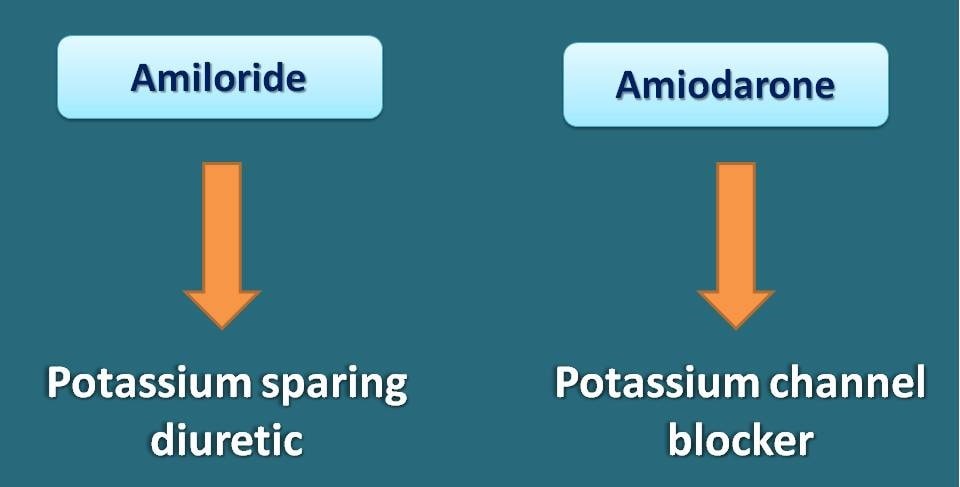7 types of medication that are often confused
by egpat 06 Aug 2019
We come across so many drug names in pharmacology and many of the times they can be remembered easily by their unique suffixes. But sometimes you may be confused with few drugs that are either pronounced in similar way or they have similar suffix. In few cases, drugs may have similarity in their categories that can be often misinterpreted. So let’s go and list out such type of drugs and see what really they are.
Vancomycin vs streptomycin
You can find here that these two drugs have same suffix “-mycin” but in reality they belong to different chemical class. Vancomycin is a glycopeptide that inhibits cell synthesis in bacteria. Contrarily, streptomycin belongs to a class of drugs called as aminoglycosides in which many of the drugs end with same suffix mycin. Drugs like neomycin, kanamycin, tobramycin, gentamycin all belong to aminoglycoside category.
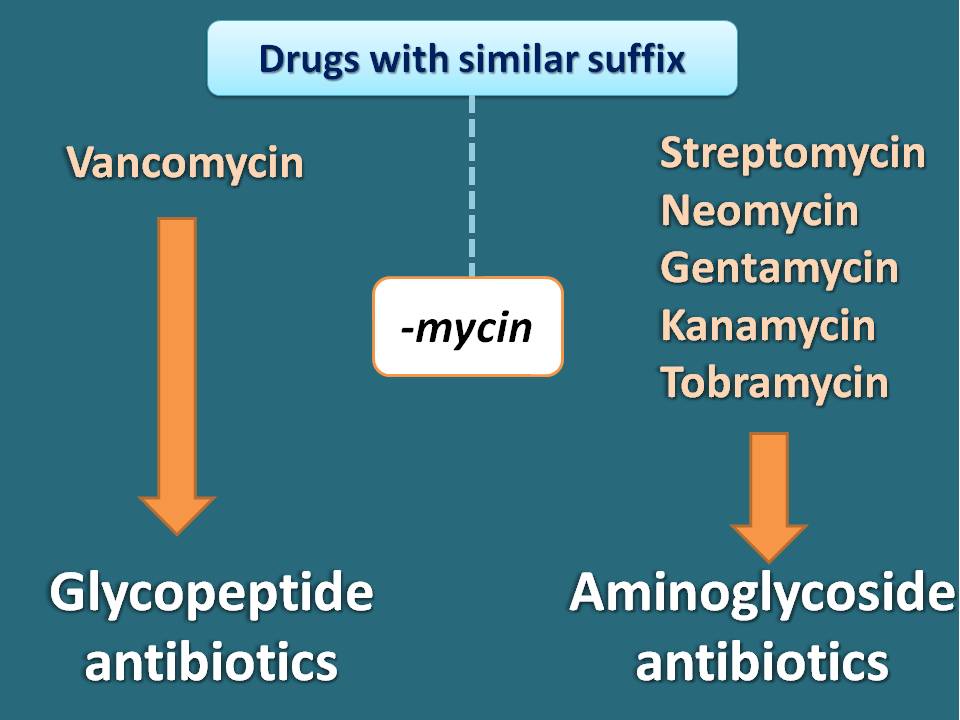
Even vancomycin and streptomycin are different in their mechanism of action. The former drug inhibits cell wall synthesis in bacteria while streptomycin inhibits bacterial protein synthesis.
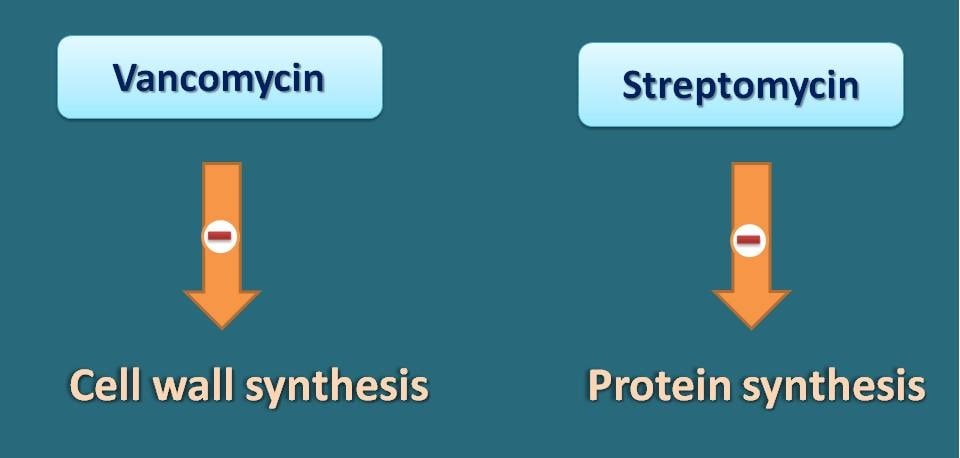
Erythromycin vs tobramycin
Now this is another point of similarity in suffixes of drugs but belonging to different categories. Erythromycin is a macrolide antibiotic while tobramycin, as listed above, is an aminoglycoside antibiotic. Other drugs among the macrolide antibiotics include clarithromycin and azithromycin. If you carefully observe, all macrolides end with suffix “-thromycin” while aminoglycosides end with suffix “-mycin”. This is a very little level of difference in their suffixes that may be often confused and misinterpreted.
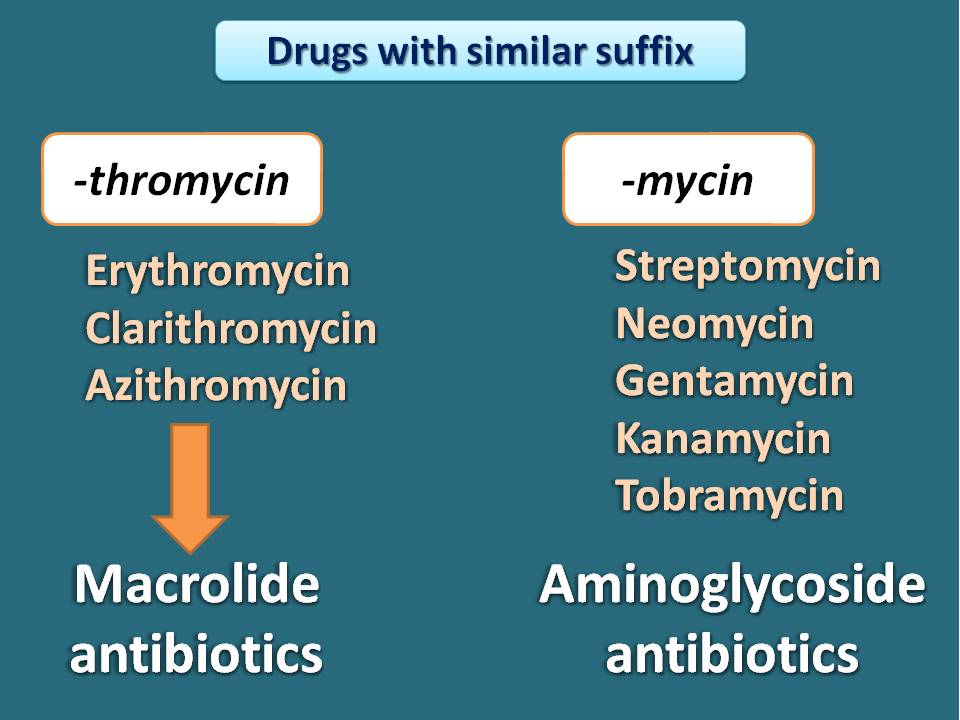
These two categories of drugs again similar in their action as both act by inhibition of protein synthesis in bacteria. Again here we can find a little difference. Macrolides inhibit bacterial protein synthesis by inhibition of translocation while aminoglycosides act by codon-anticodon mispairing.
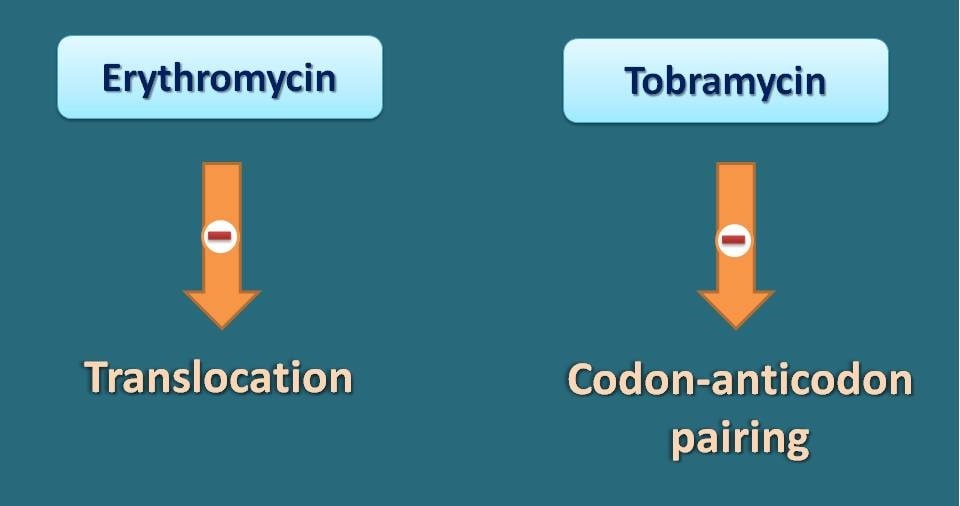
Omeprazole vs aripiprazole
You can find that these two drugs have similar suffix “-prazole”. But this time they are completely different in their clinical use. Omeprazole is a proton pump inhibitor that is indicated for peptic ulcers. All the drugs in this category such as pantoprazole, lansaproazole and rabeprazole have same suffix.
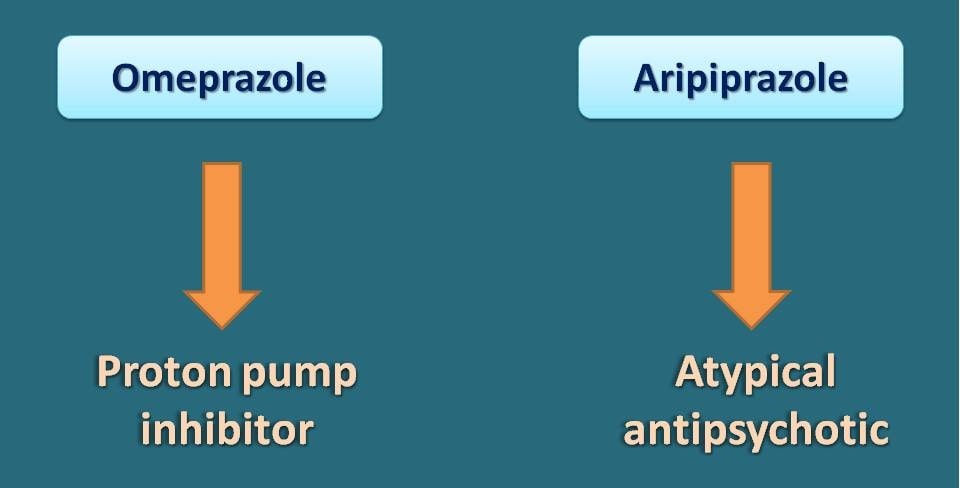
On the other hand, aripiprazole is an atypical antipsychotic that is indicated in the treatment of psychotic disorders like schizophrenia. This drug acts as partial agonist at dopamine receptor and belongs to second generation antipsychotics.
Simvastatin vs cilastatin
Simvastatin belongs to a well known category commonly known as statins. That’s why all the drugs in this category such as lovastatin, pravastatin, atorvastatin, rosuvastatin and pitavastatin have the common suffix statin. These drugs decrease LDL cholesterol and increase HDL cholesterol in the blood by inhibiting HMG Co-A reductase enzyme in the liver.
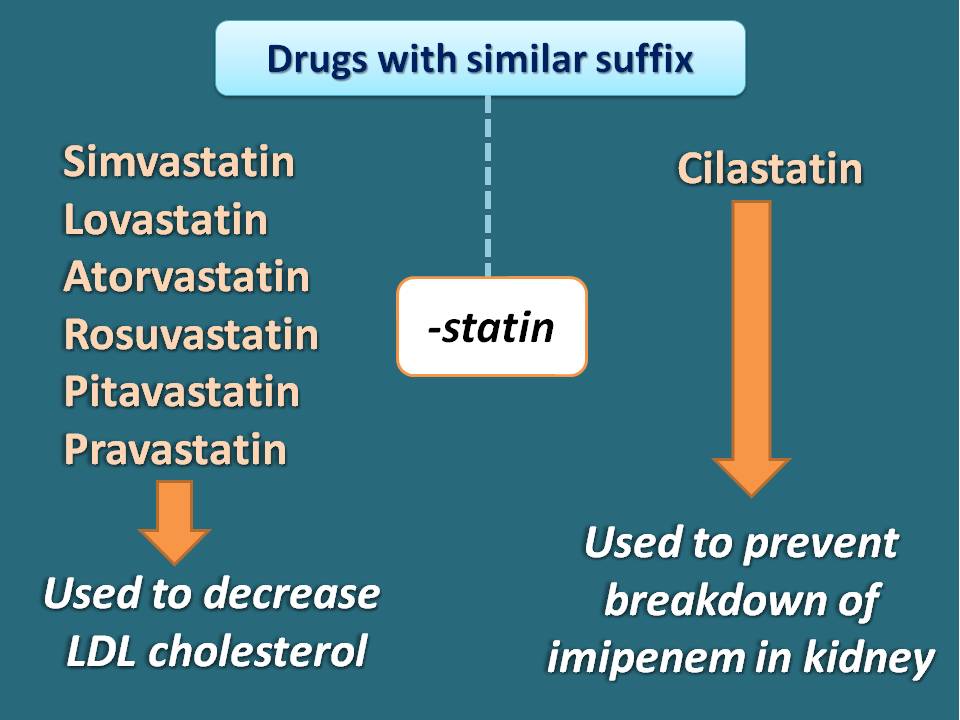
Cilastatin is actually used as adjuvant to prevent breakdown of one of the antibiotic imipenem in the kidney. It inhibits dehydropeptidase enzyme in the renal system thereby prevents breakdown of imipenem. It has no clinical use alone but given along with imipenem to increase its bioavailability.
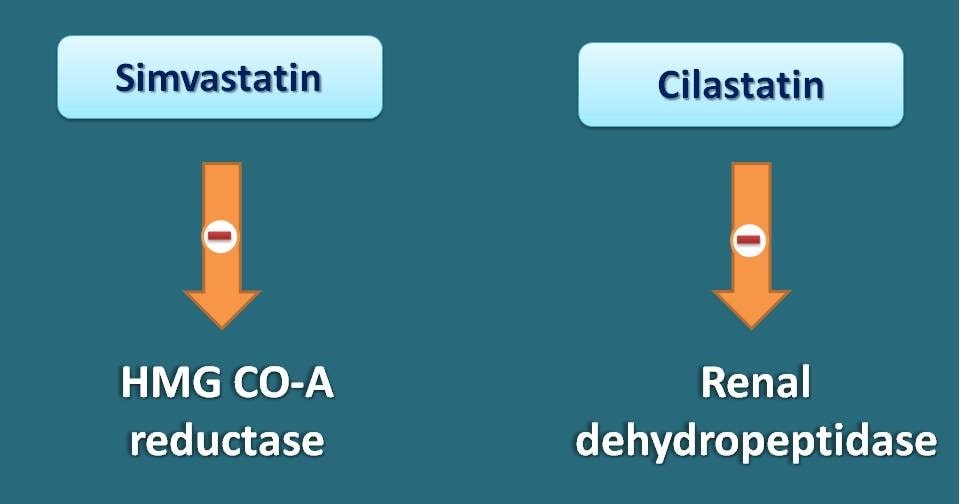
Atenolol vs sotalol
Yes, this is another pair of drugs with partial similarity both in their suffix of their names and mechanism of action. Atenolol is a selective beta blocker ending with suffix “-olol”. In fact, many of the href=" /blog/beta-blockers-a-central-role-in-cardiac-disorders"> beta blockers both selective and non-selective are used in cardiovascular disorders and have the same suffix. But sotalol is a potassium channel blocker that belongs to class III antiarrhythmic agents. Interestingly another drug in this category, amiodarone, has different suffix.
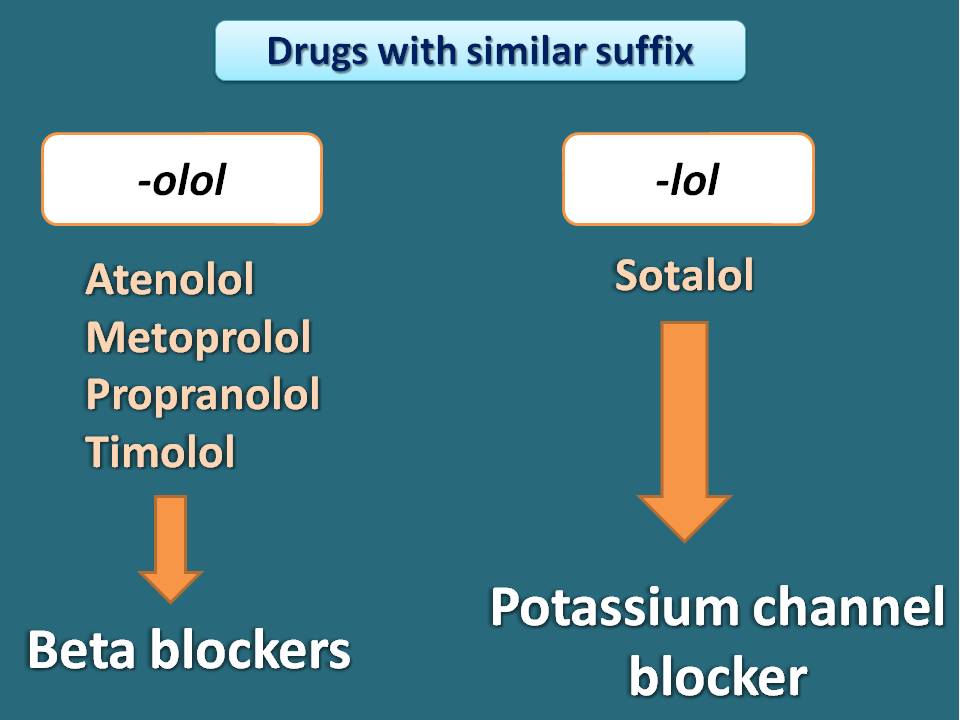
Why only sotalol has somewhat similar suffix as beta blockers have?
That’s all due to its dual mechanism. Yes, sotalol is not only a potassium channel blocker but it also has additional beta blocker activity. Since it is has some beta blocker activity, the suffix is partially retained.

Omeprazole and Clotrimazole
You can find a common suffix azole in the above listed two drugs. But as we have already discussed above, omperazole is a proton pump inhibitor used for gastric ulcers. Clotrimazole is an antifungal agent that commonly called as azole antifungal. Many of the drugs in this category like ketoconazole, miconazole, iconazole all have imidazole ring thereby indicated with suffix azole.
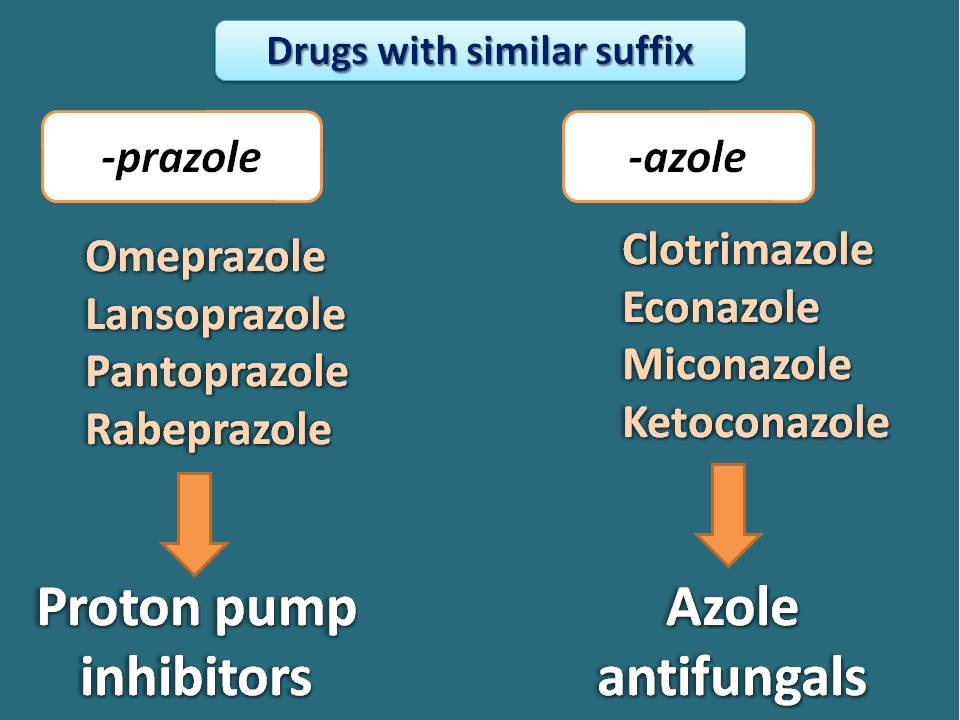
Amiloride and Amiodarone
Finally we end with two drugs that may be pronounced similarly to some extent and even some similarity in their category. Amiloride is a potassium sparing diuretic while amiodarone is a potassium channel blocker. The former drug affects potassium levels in the body by acting on renal system while the later one is a drug that acts on potassium channel. They may be often confused as both the drugs are associated with action on potassium.
